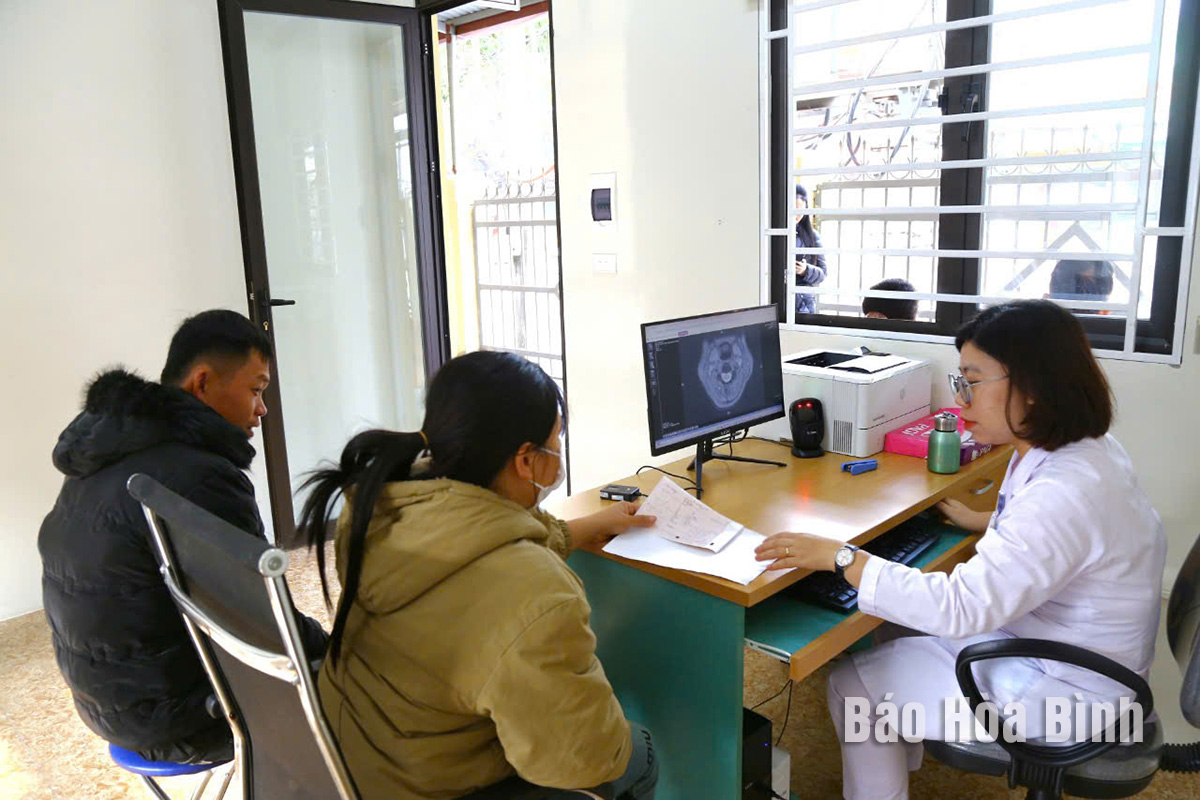
The General Hospital of Hoa Binh province has unveiled its new on-demand medical examination and treatment facility on the second floor of its parking complex, responding to growing patient demand for better healthcare services. The facility re-organisation aims to reduce the waiting time and alleviate pressure on other departments of the hospital.
A doctor at the new facility gives advice to her
patient.
Bui Van Thong and Bui Thi Iu, a couple from Vu
Binh commune of Lac Son district, came there for comprehensive health
screenings. They recently received personalised consultation from Doctor Hoang
Thi Ngoc Mai at the Oncology Department. They said they chose the on-demand
service for its efficiency and access to top medical professionals.
According to Doctor Chu Thi Thu Hoai, head of
the on-demand medical services unit, said that the new facility is operating
under strict protocols without disrupting operations of other departments. It
focuses on delivering high-quality, efficient, and convenient medical services
that meet patient expectations.
The facility features three examination rooms
specialising in internal medicine, surgery, and pediatrics, alongside those for
medical procedures, X-ray imaging, and ultrasound examinations.
Hoai said the hospital management board has
implemented a comprehensive plan to ensure smooth operations, including assigning
specific tasks to relevant departments and establishing coordination protocols.
The social work department is actively
introducing the on-demand services to patients through various channels,
including advice, announcements, and social media platforms. The ultimate goal,
according to the doctor, is to continue improving medical care quality and
securing patient satisfaction.
More than just an information technology teacher, Bui Van Nien is an inspiring figure who has nurtured the scientific curiosity and creative spirit of students in Vietnam’s ethnic minority communities.
Da Bac is the most disadvantaged mountainous district in Hoa Binh province, with ethnic minorities accounting for about 90% of its population. Over the past years, the district has mobilised resources to implement ethnic policies to improve the quality of life of local people.
In recent years, Hoa Binh province has consistently prioritised the protection, care, and education of children, particularly those from ethnic minorities and disadvantaged backgrounds, by creating a safe, healthy, and nurturing environment for their all-round development.
The Steering Committee for Tobacco Harm Prevention and Control of Hoa Binh province, in coordination with the Tobacco Harm Prevention and Control Fund, held a ceremony on May 28 in response to the World No Tobacco Day (May 31) and the National No Tobacco Week (from May 25 to 31). The event was chaired by Nguyen Van Toan, Standing Vice Chairman of the provincial People’s Committee and head of the Steering Committee.
Since 2021, the Center for Industrial Promotion and Industrial Development Consulting (CIIDC) under the Department of Industry and Trade has been implementing a school lighting model as part of the plan for using energy efficiently and economically in Hoa Binh Province in the pẻiod of 2021 - 2025. This model not only aims to improve the learning conditions and enhance the education quality, but it also promotes the message of energy saving, energy security, environmental protection and contributes to the goals of socio-economic development.
In the 2024 - 2025 school year, the entire Hoa Binh provincial education sector includes 520 educational institutions and schools. Among them are 13 ethnic boarding schools with 153 classes and 4,487 students. Four of these schools have met national standards, reaching 30.7 percent.



